I’m going to share the latest Cisco 350-601 certification exam practice questions and answers with you, along with detailed explanations for each option to help you understand easily — especially suitable for beginners!
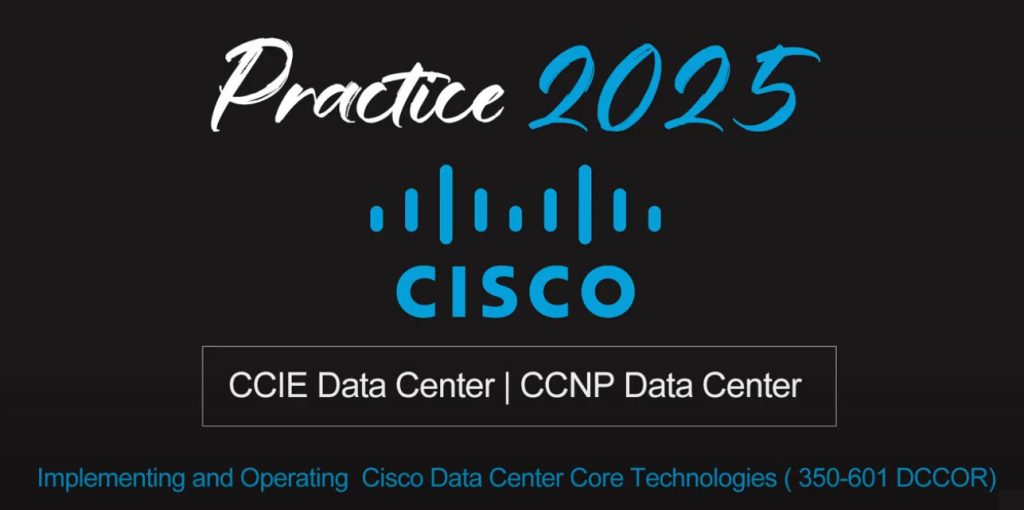
Here’s what you’re going to get next:
- The latest Cisco 350-601 certification exam practice test online
- Cisco 350-601 PDF for download
- Cisco 350-601 exam practice question video explanations
- 500+ key certification practice questions for success
Ready?
Let’s get started!
2025 Cisco 350-601 Certification Exam Practice Questions
The analysis for questions 1 through 8 has been shared in the Cisco 350-601 video explanation. Next, I will start sharing from question 9.
Question 9:
The EPLD update of the supervisor module has been scheduled for several Cisco MDS 9000 Series Switches. What will be the impact of the update?
A. All traffic is stopped for the duration of the EPLD update and the switch is rebooted after the upgrade is completed.
B. The redundant supervisor takes over while the EPLD update is in progress and the switch is rebooted after the upgrade is completed.
C. All control plane traffic is stopped for the duration of the EPLD update and the switch remains operational for the duration of the upgrade.
D. The redundant supervisor takes over while the EPLD update is in progress and there is no service disruption.
Breakdown:
Let’s dive into Question 9, focusing on the impact of an EPLD update for the supervisor module on Cisco MDS 9000 Series Switches. This is a critical topic for maintaining switch reliability, so let’s break it down.
- A. This is correct. EPLD updates on the supervisor module typically require a full switch reboot, halting all traffic during the process and after completion.
- B. Incorrect, as MDS 9000 switches with a single supervisor don’t support failover during EPLD updates, and a reboot is still required.
- C. False, as the entire switch, not just control plane, is affected, and it doesn’t remain operational.
- D. Incorrect, as a reboot disrupts service, and not all MDS models support seamless supervisor failover.
The impact is a complete traffic stop and a reboot. Correct answer: A.
Question 10:
Refer to the exhibit.
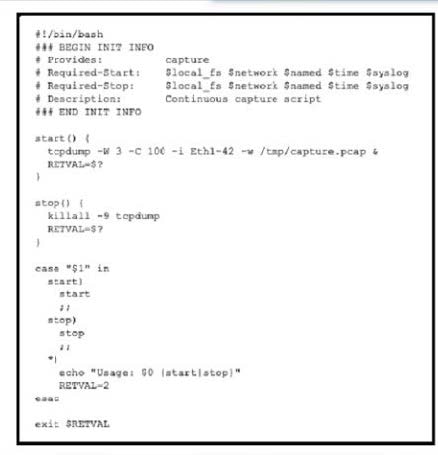
A network engineer must run a continuous capture on a port A script called \’\’capture\’1 is created to start and stop the capture task. Which command sequence makes the capture persistent after a reboot?
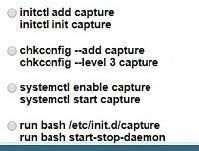
A. Option A
B. Option B
C. Option C
D. Option D
Breakdown:
Question 10, where a network engineer needs to run a continuous capture on a port using a script called ‘capture’ and ensure it persists after a reboot. The exhibit shows command options and a script snippet, so let’s analyze.
- A. initctl add capture initctl init capture: This adds and initializes the capture but doesn’t ensure persistence across reboots.
- B. chkconfig –add capture chkconfig –level 3 capture: This adds the script to chkconfig and enables it at runlevel 3, but the syntax is incomplete for persistence.
- C. systemctl enable capture systemctl start capture: This enables the capture service to start automatically on boot and starts it immediately, ensuring persistence.
- D. run bash /etc/init.d/capture run bash start-stop-daemon: This manually runs the script but doesn’t configure it for automatic startup.
The correct sequence to make the capture persistent is systemctl enable capture followed by systemctl start capture. Correct answer: C.
Question 11:
An engineer needs to perform a backup of user roles and locales from Cisco UCS Manager to replicate the setting to a different fabric interconnect. The engineer wants to review the file before importing it to a target fabric interconnect. Which backup type must be selected to meet these requirements?
A. all configuration
B. system configuration
C. logical configuration
D. full state
Breakdown:
Question 11, where an engineer needs to back up user roles and locales from Cisco UCS Manager to replicate settings to another fabric interconnect, with the ability to review the file beforehand. This requires selecting the appropriate backup type.
- A. This includes everything, which is excessive and harder to review for specific settings like roles and locales.
- B. This backs up system-level settings, including user roles and locales, and allows review before import—ideal for this scenario.
- C. This focuses on logical setups (e.g., service profiles), not user roles or locales.
- D. This captures the entire system state, including runtime data, making it unsuitable for selective review.
The correct backup type is system configuration. Correct answer: B.

Question 12:
An engineer is designing a cloud solution for an organization. The security requirements mandate that the cloud must be hosted in a local data center but leverage the remote data center for remote backups. Additionally, the workloads in the data center must be scaled out to a known cloud provider in the future. Which cloud deployment model must be used to meet these requirements?
A. public cloud
B. hybrid cloud
C. private cloud
D. edge cloud
Breakdown:
Question 12, where an engineer is designing a cloud solution with specific security and scalability needs. The cloud must be hosted locally with remote backups at another data center, and workloads should scale to a known cloud provider later. Let’s evaluate the options.
- A. Fully hosted by a third party, lacking local control and remote backup integration.
- B. Combines a private cloud (local data center) with a public cloud (remote backups and future scaling), meeting all requirements.
- C. Hosted locally, but it doesn’t inherently support remote backups or easy scaling to a public provider.
- D. Focuses on low-latency edge processing, not addressing backups or future scaling.
The correct deployment model is hybrid cloud. Correct answer: B.
Question 13:
DRAG DROP
Drag and drop the NAS and NFS concepts from the left onto the definitions on the right.
Select and Place:
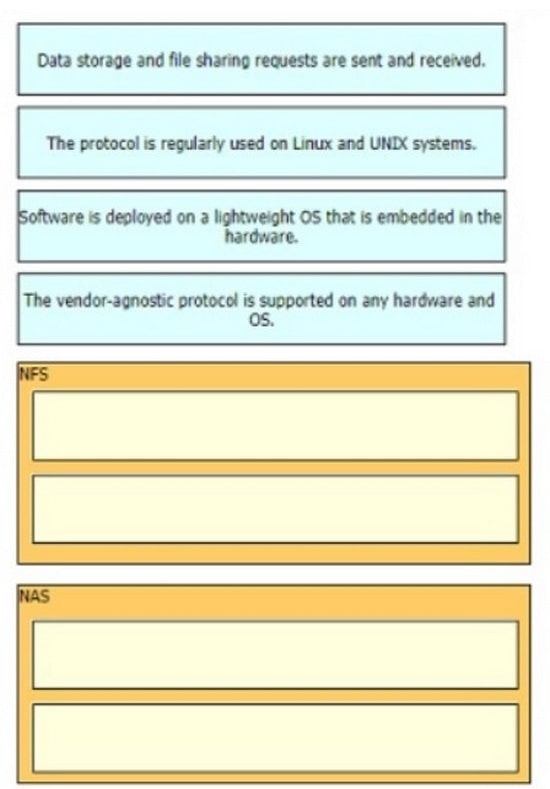
Correct Answer:
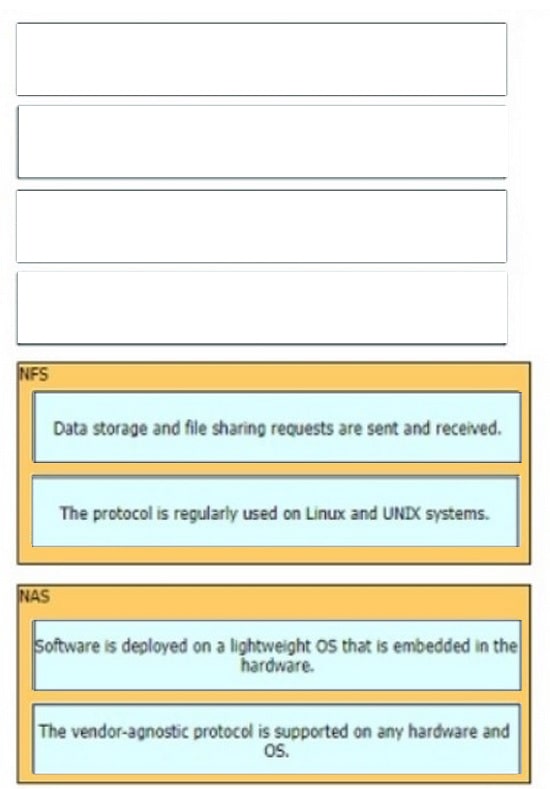
NFS Data storage and file sharing requests are sent and received The protocol is regularly used on Linux segment
NAS Software is deployed on a lightweight OS that is embedded in the hardware The vendor-agnostic protocol is supported on any hardware and OS
This question is not very clear when printed. Please understand it according to the picture and text.
Question 14:
A network engineer must create a script to quickly verify IP reachability for multiple hosts using ping from the Cisco NX-OS switches. The script should use the management VRF and exit the shell after execution. Which script should be used to achieve this objective?
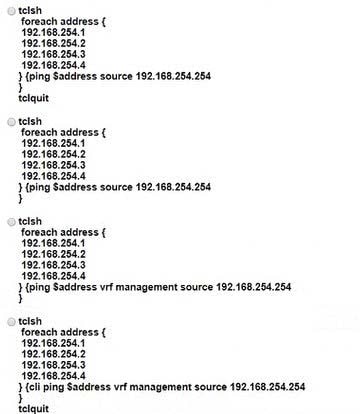
A. Option A
B. Option B
C. Option C
D. Option D
Breakdown:
Question 14, where a network engineer needs a script to verify IP reachability for multiple hosts using ping from Cisco NX-OS switches, utilizing the management VRF and exiting the shell afterward. Let’s analyze the options based on the exhibit.
- A. ctclsh address { … } ping { … } quit: Uses Tclsh with ping commands but lacks VRF specification.
- B. ctclsh address { … } ping { … } } ping {Saddress source 192.168.254.254 }: Tclsh with ping, but the syntax is incomplete and missing VRF context.
- C. ctclsh address { … } ping {Saddress vrf management source 192.168.254.254 }: Tclsh with ping and VRF management, but the closing brace and quit are misplaced.
- D. ctclsh address { … } ping {Saddress vrf management source 192.168.254.254 } } ping { quit: Tclsh with ping, correctly specifies management VRF, and includes quit to exit the shell.
The correct script is the one in Option D, ensuring VRF management and proper shell exit. Correct answer: D.
Question 15:
An engineer must configure a VDS port group using APIC policy. The requirements are for the frames to be mapped to a particular Layer 2 network and for the virtual machine assigned to the port group to receive all frames passed on the virtual switch.
Which two settings must be used to meet these requirements? (Choose two.)
A. forged transmits
B. VMDirectPath
C. port binding
D. promiscuous mode
E. VLAN
Breakdown:
Question 15, where an engineer must configure a vDS port group using APIC policy to map frames to a specific Layer 2 network and ensure the virtual machine receives all frames on the virtual switch. We need two correct settings.
- A. Allows forged source MAC addresses, not relevant to mapping or receiving all frames.
- B. Enables direct hardware access, not for frame mapping or promiscuous behavior.
- C. Controls port allocation, unrelated to frame mapping or full frame reception.
- D. Enables the VM to receive all frames on the switch, meeting the second requirement.
- E. Maps frames to a specific Layer 2 network, satisfying the first requirement.
The correct settings are promiscuous mode and VLAN. Correct answers: D, E.
Why make them separately
Why did I decide to split this article into separate parts? Because the content is truly extensive — making a full video would take a lot of time, and writing a single long article would be overwhelming in length. So, I chose to share it in parts.
Honestly, it’s also a personal habit. I enjoy listening to stories as much as I enjoy reading. So I thought — if you get tired of reading, you can listen; if you get tired of listening, you can read.
I know some of you are looking for the complete set of free practice questions. That’s why I compiled everything into a PDF. You can find the link in my video description, or access it directly here: https://drive.google.com/file/d/1GAz4pAQI30lDIdXjlewLeWChTq55A0ce/view?usp=sharing
Cisco 350-601 Video Analysis
Almost forgot — I haven’t shared the video yet! Here’s the video covering questions 1 through 8.
500+ Cisco 350-601 Practice Preparation Materials
Finished practicing?
Surprised that you completed everything I prepared in just 10 minutes?
I know many of you are looking for more Cisco 350-601 exam practice questions. In fact, this time I’m sharing a total of 576 certification practice questions.
Visit https://www.leads4pass.com/350-601.html to get 500+ of the latest exam questions and answers in PDF or VCE format.
Wishing you great success in your exam preparation!
Finally, let me summarize this article.
I started at 9 a.m., first organizing the Cisco 350-601 exam practice questions. I selected a total of 15 questions.
Then I began creating the video: converting each question into voice, designing banners, slicing each part, and integrating everything. The video production was completed around noon.
In the afternoon, I published the video. Once that was done, I started preparing this article.
After such a busy morning, I honestly didn’t feel like writing it, but in the end, I spoke while writing and managed to finish the article this way.
The core of this article is the analysis of Cisco 350-601 exam questions and answers, along with a brief overview of my creative process and thoughts.
That’s it. Everyone who reads this article — you’re destined to pass the Cisco 350-601 certification exam in one go!